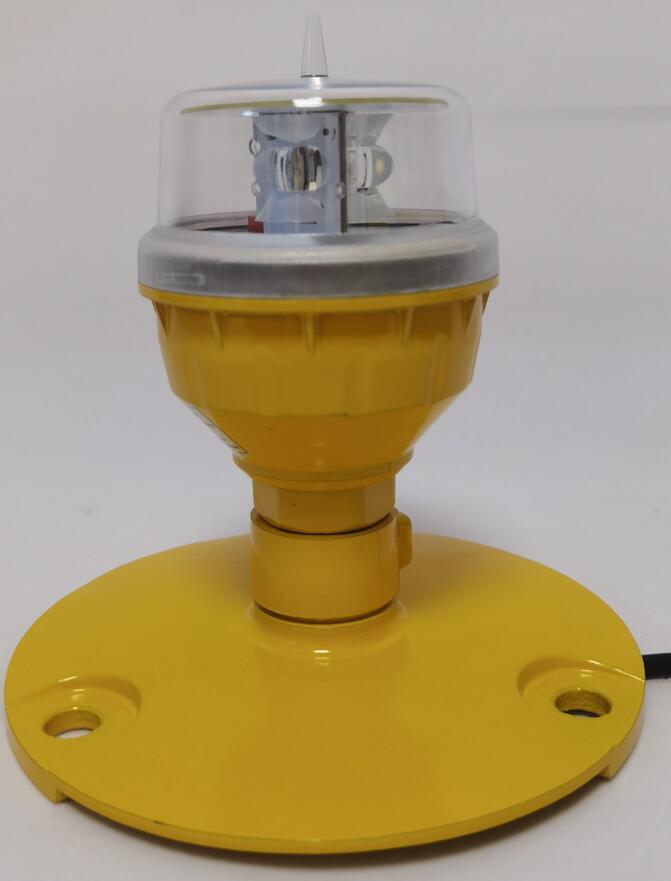The LED Helipad Light Revolution: Illuminating Modern Vertical Flight
In the dynamic world of aviation technology, few innovations have transformed safety and operational efficiency as profoundly as the adoption of LED helipad light systems. These advanced lighting solutions represent a fundamental shift from traditional illumination methods, offering unparalleled performance, reliability, and versatility for helicopter operations across diverse environments. From hospital rooftops to offshore platforms and urban vertiports, LED helipad lights have become the standard for defining landing areas, guiding approaches, and ensuring safe operations during night and reduced visibility conditions.
The transition to LED technology in helipad lighting addresses critical aviation requirements that were challenging for conventional lighting systems to meet. Traditional incandescent and halogen lights consumed excessive power, generated significant heat, and required frequent maintenance—particularly problematic for remote or inaccessible landing sites. The LED helipad light overcame these limitations through solid-state engineering, providing intense illumination with minimal energy consumption, negligible heat output, and exceptional longevity. This technological leap has enabled heliport operators to maintain 24/7 operational readiness with significantly reduced maintenance burdens.

The performance characteristics of modern LED helipad lights are specifically engineered for aviation safety requirements. These systems produce highly directional light with precise photometric distribution, ensuring optimal visibility from approach angles while minimizing light pollution for surrounding areas. The lights typically employ true green optics, providing the highest visual contrast against urban backgrounds and adverse weather conditions. Advanced models incorporate programmable intensity controls, allowing automatic adjustment based on ambient light levels—dimming during bright daylight and achieving maximum output at night or in fog, rain, or snow conditions.
Durability represents another cornerstone of LED helipad light superiority. Engineered to withstand the harsh operating environments characteristic of helicopter operations, these fixtures feature robust construction resistant to rotor downwash, vibration, extreme temperatures, and moisture intrusion. Many units achieve complete ingress protection (IP67 or higher), ensuring reliable performance when submerged or exposed to blowing snow and ice. This resilience is particularly valuable for offshore installations, where lights must endure saltwater corrosion and constant exposure to marine environments, and for arctic operations, where temperatures can plunge far below freezing.
The versatility of LED helipad light systems enables customized solutions for diverse operational requirements. flush-mounted fixtures provide smooth, obstruction-free surfaces for hospital helipads where ground personnel must move safely around active landing areas. Elevated light units offer enhanced visibility for ground-level helipads in remote locations. Perimeter lighting configurations define landing area boundaries with exceptional clarity, while touchdown lights provide precise visual guidance for the final descent phase. Specialized systems are available for temporary or emergency helipads, featuring portable designs with solar power capabilities for rapid deployment in disaster response scenarios.
Integration capabilities represent a significant advancement in LED helipad light technology. Modern systems can be incorporated into centralized heliport control systems, allowing remote monitoring and adjustment of lighting configurations. Smart lighting networks enable automated performance diagnostics, instant fault reporting, and predictive maintenance alerts—ensuring that any degradation in performance is addressed before it compromises safety. These systems can synchronize with other aviation lighting, such as obstacle lights and approach path indicators, creating a comprehensive visual guidance system that enhances situational awareness throughout the approach and landing sequence.
| led helipad light |
Environmental considerations have played a crucial role in the development of LED helipad light technology. The minimal power requirements of these systems make them ideal for solar-powered applications, enabling off-grid operations in remote areas without access to conventional power sources. The focused light distribution and adjustable intensity capabilities significantly reduce light pollution, addressing concerns about the environmental impact of aviation operations on wildlife and surrounding communities. These features demonstrate how technological innovation can advance both operational capabilities and environmental responsibility.
As urban air mobility and unmanned aerial systems continue to evolve, LED helipad light technology is adapting to meet new challenges. Future developments may include enhanced compatibility with night vision imaging systems, improved visibility in brownout conditions, and integration with augmented reality displays for pilot assistance. The inherent flexibility of LED technology positions these systems to accommodate emerging requirements for electric vertical takeoff and landing aircraft and increased automation in aviation operations.
The LED helipad light represents more than just an improvement in illumination technology—it embodies the advancement of aviation safety into a new era of efficiency and reliability. These systems provide the critical visual guidance that enables helicopter operations to proceed safely in increasingly complex airspace and challenging environments. Their steady, energy-efficient glow symbolizes the aviation industry's commitment to leveraging technology for enhanced safety and operational capability. As vertical flight continues to expand its role in transportation, emergency services, and commercial applications, LED helipad lights will remain essential components of the infrastructure that makes these operations possible, ensuring that every landing concludes with precision and safety regardless of conditions.
